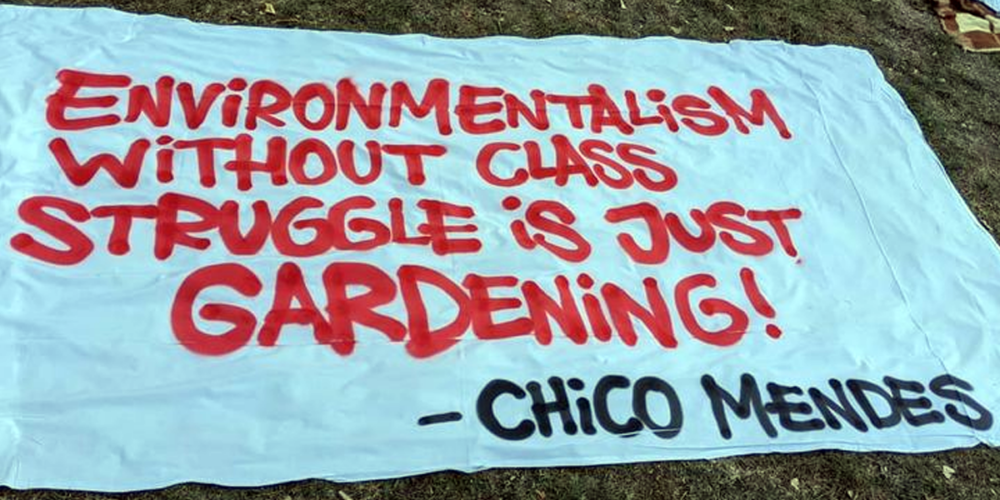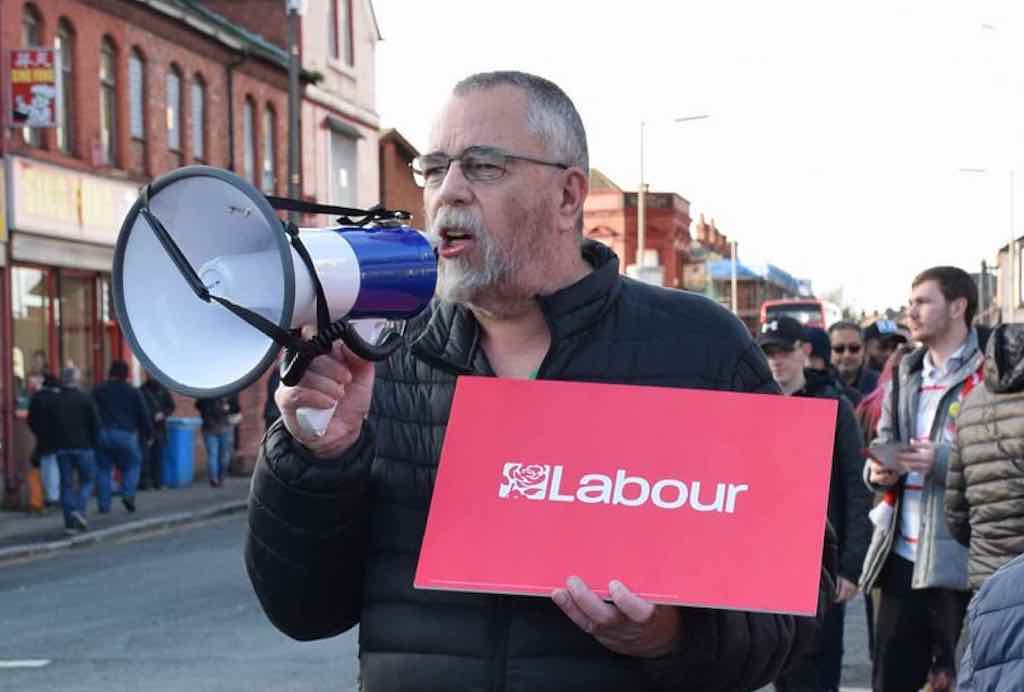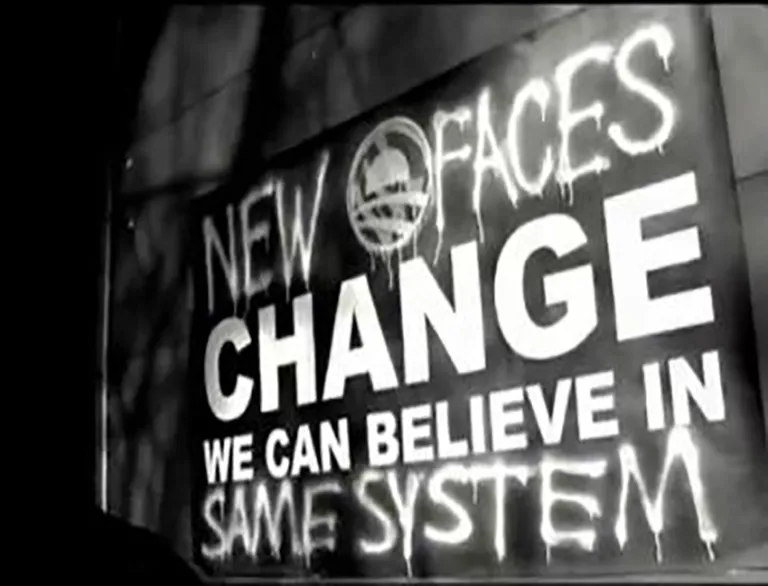I always found Murray Bookchin’s perennial critiques of anarcho-syndicalism to be misdirected. It’s not as if there was a burgeoning anarcho-syndicalist movement in the United States that was steering the revolutionary masses in the wrong direction. Bookchin also misrepresented the revolutionary politics of historic anarcho-syndicalist movements, which never narrowly focused on the workplace as the one and only revolutionary arena. The first anarcho-syndicalists, although they referred to themselves as federalists, anarchists, and collectivists, were the anti-authoritarian activists in the First International associated with the anarchist revolutionary, Michael Bakunin. And when they first put forward an anarcho-syndicalist program at the 1869 Basle Congress of the International, they advocated organizing for the revolution through the workers’ autonomous organizations and on a communal (or municipal) basis, a combination of revolutionary trade unions and revolutionary communes that would together provide the basis for a stateless federation of directly democratic associations for production, distribution and consumption in conjunction with more geographically based federations of communes, which together would create a socialist society. Although Bookchin claimed that he did not ignore the importance of working class organizations in achieving an ecological society, his focus on municipal politics and continual sniping at the anarcho-syndicalists left the impression that he did not see class based organizations playing much of a role.
In Volume Three of Anarchism: A Documentary History of Libertarian Ideas, I included a piece by Bookchin advocating “municipal” as opposed to “workers’ control” of the means of production. As I’ve argued elsewhere, this creates serious problems regarding the realization of Bookchin’s social ecological vision of a stateless future without hierarchy and domination in which people live in harmony with themselves and with nature if people, in their capacity as workers, are subject to the authority of the municipal assemblies. I also included a piece by Graham Purchase under the heading “Green Anarcho-Syndicalism,” in which he argued that revolutionary trade unions would have to play a role in the creation of an ecological society, which does not mean giving them a privileged role or power over others.
Alex Kolokotronis takes another approach in his article from Roar magazine, “Municipalist Syndicalism,” which differs significantly from Purchase’s “green anarcho-syndicalism,” primarily in that it is not an anarchist form of municipalism or syndicalism. I’ve reproduced a portion of Kolokotronis’ article below. Kolokotronis advocates the democratization of existing trade unions, rather than the creation of revolutionary trade unions, which can then provide organizational and financial support for a municipalist political program in multiple locations.
Municipalist Syndicalism
The strength of municipalism lies in its locality, in its attention to the particular — an attention that some of the best unions have and harness. But to offset against at least some pressures, it must also find strength in its multiplicity. That is to say, not just the multiplicity that lies within a given locale, town or city, but the multiplicity that is at the core of notions of confederalism.
I call this type of politics municipalist syndicalism because, although it is socialistic and premised on multi-tendency coalitions, different chief agents will arise in different contexts. In the context of unionized “eds & meds” metropolitan regions, the unionized “new” working class can be that agent. Where will the meetings be held? Who will have resources to establish an effective communications system? Who will do the canvassing (whether for candidates or as part of a participatory process)? Unions can do a substantial part of this work. And in that way, it is syndicalist: unions deploying their self-organized power and resources towards a political end. Yet, it is municipalist in that organized labor’s eyes are turned for more far-reaching transformation. A transformation beyond the point-of-production.
Before this can take place, however, there must be a democratization of unions themselves.
Community-Focused Union Democracy
As I noted in a previous piece for ROAR Magazine, concepts and designs of union democracy have remained quite thin. Participatory budgeting for union dues can be part of a union’s democratized design. I have argued that participatory budgeting can help stimulate class consciousness, serve as a means for worker education (particularly in the area of self-management), and help transform bureaucracy into a collaborative iterative form of administration.
Participatory budgeting also has an intersectional character. It has been a forum for including and empowering immigrants. It has also increasingly become a staple of the Movement for Black Lives. Public Agenda’s research of PB in North America finds that “black residents were overrepresented or represented proportionally to the local census among voter survey respondents.” In an official statement addressed to Chicago Mayor Rahm Emanuel, Black Youth Project 100 called “for a participatory city budget in which the public has the power to defund the Chicago Police Department and invest those dollars and resources in Black futures by setting a living wage with union representation.”
BYP 100 member Rossanna Mercedes writes that she has “witnessed first hand the organizing power of black people in participatory budgeting.” Mercedes recounts that “formerly incarcerated persons, mostly Black men, organiz[ing] together through a local community based organization and decide how to spend tax dollars in their neighborhoods. Black youth let[ting] their neighbors know about the process by knocking on doors, taking the vote to them to build support for projects they’ve proposed for their communities.” Mercedes goes further, imagining “what we could do with Community Development Block Grants, the billions in federal funding for those of us in low income communities.”
Participatory budgeting for a labor union could potentially help ground and scale this work, and also connect to it. It can be an organizational form that materially connects labor unions to community groups, with the backing and creative leadership of membership. It can create the necessary alliances for a real municipalist program and movement. There can even be cross-union and cross-local participatory budgeting processes, reminiscent of the regional assemblies once held by the Knights of Labor in the nineteenth century.
Unions can even help community groups achieve their targets, by deploying both their fiscal capital as well as social capital. A labor union participatory budgeting process, for example, could include a budget category of external or “community relations.” Union members could propose ideas and craft projects that directly benefit or work together with the larger community.
This dimension of a union participatory budgeting process could then flow into a democratized “Bargaining for the Common Good” initiatives (partnerships between labor unions and community-based organization that pursue “broad based campaigns that demand common good solutions to win progressive revenue and advance community fights such as affordable housing, universal pre-k and expanded after school programs, and improved city services, as just a few examples”). Such Common Good Bargaining frameworks would be more thoroughly co-designed, which itself would flow out of experiences of co-design and co-production practiced in project development phase of the labor union participatory budgeting process.
There are other ways that democratic union processes can be designed for intersectional ends. One way of explicitly doing this could be through a participatory mapping process. Here members themselves bring their “local situated knowledges” and “standpoints” to the mapping of a workplace or work-location. For example, a number of public schools in the United States fall short of meeting requirements prescribed by the Americans with Disabilities Act (ADA). Even when accessibility grievances are lodged through unions, such grievances either fall through the union’s bureaucratic cracks or are simply ignored. Participatory mapping processes could be formally linked to what ends up on the bargaining table between unions and employers. Member participation would achieve results by substantively reorienting unions towards intersectional concerns, while also informally pressuring union leadership to act accordingly.
Participatory budgeting and mapping processes within labor unions would also prepare unionized workers to take part in municipal-level participatory budgeting processes. Beyond cultivating trust, this would train union members to operate large-scale participatory budgeting processes in preparation for significant scaling and expansion of participatory democratic processes. Competencies developed within unions would be readily available for transference and scaling at the municipal level. With all of these initiatives being inclusive of non-labor community groups, coalitions would be in place and there would be a backlog of trust-generating experience of having worked together.
Working with this variety of community groups and associations — such as retirees — unions can also streamline the creation of a sector of workers’ controlled enterprises. Soon-to-be retirees hold a stock of businesses that could be converted to democratic employee-ownership. Retiree associations possess networks that could connect those seeking to convert their enterprise with those who can help carry out the conversion. Retirees are also a significant segment of the voting base. Through lending legal and fiscal capacity for converting businesses to democratic employee-ownership (this itself is a tremendous opportunity considering that nearly 25 million workers are employed in businesses susceptible to conversion), soon-to-be-retirees will have found an exit-option.
Municipalist takeover by unions would then enable redeployment of this legal capacity — with greater resourcing, staffing and generalized support. With an autonomous federation of workers’ controlled businesses, democratized unions would have another ally possessing extensive fiscal resources — an ally operating according to socialist relations of production.
A number of unions in eds & meds already see the municipality as a key site of political engagement. In New Haven, a number of current or former UNITE-HERE organizers or officers have been elected to the Board of Alders (effectively, the City Council). There, a coalition of unions and community groups successfully called on Yale University to hire five-hundred residents from communities of color. The Chicago Teachers’ Union (CTU) has run multiple teachers as candidates for the city’s Board of Alders and mayorality. It has also publicly forged ties with community groups, earning the CTU’s reputation for practicing “social movement unionism.” Power is being leveraged in these cities not only for organized labor as it stands, but the city as a whole. Labor unions are already heading this way. The key is imbuing this movement with a democratized form, imperative and character.
DSA as Potential Platform for Municipalist Syndicalism
There is another question: through what inter-union platforms could this be coordinated. One potential organization is Democratic Socialists of America (DSA), the fastest growing socialist organization with 25,000 members. Countless members have demonstrated a commitment to an intersectional socialism as well as one focused on the labor movement. As shown by the intersectional character of participatory budgeting and other processes above, municipalist syndicalism gives content to this commitment.
Thus, as DSA turns towards creating a Democratic Socialist Labor Commission (DSLC), it would be wise to consider how union democracy can help flow into the construction of a municipalist socialism. Subsection 3 of the priorities resolution states that “DSA is committed to building democratic labor unions that empower and activate their rank-and-file members.” Putting forward a mix of reforms that include union dues participatory budgeting and common good bargaining adds programmatic weight to this statement.
A DSLC that “coordinates chapter-based labor branches” can do so along such lines, on the premise that if democratic socialism is to be implemented on the national level it must be first experimented with within our unions and within our cities. DSLC can help materially articulate a municipalist syndicalism. A socialism in which democratized unions take leadership, by constructing intersecting layers of self-governance and self-management at the municipal and regional level. Democratization of unions — and union capacity deployed-today towards democratization of the workplace — would remake unions into a “bridgehead” to a participatory society.
The seeds of a municipalist program already lie within the labor movement’s capacity. Once planted, the seeds of municipalism can grow from a democratization of the union to a democratization of the city itself — along direct and participatory lines. It is not the only pathway to radical municipalism, but it is the promise of the new working class. It is the promise of socialist-led union democracy in the twenty-first century.
Alexander Kolokotronis via Robert Graham

Green Syndicalism
The exploitation of labor and the exploitation of land under capitalism have always been integrally connected – one does not occur without the other. From the violence of enclosures of commons, expanded across the globe through colonialism – ongoing acts that are the bedrock of capitalist property relations. Through the dispossession, displacement, and social control of the enclosed upon, in the service of capitalist property and labor markets. Violent expropriation of land, and the means of the sustenance of life, are the very conditions for forced production for profit. Labor is rendered exploitable by destruction of its conditions of autonomous survival.
The connected character of the exploitation of land and labor is shown forcefully in the fact that the industries most directly destructive of nature are also those which have been most dangerous and deadly for workers and for Indigenous people. Logging, mining, fishing, farming.
Ending the exploitation of one is not possible without ending the exploitation of the other. And yes, this includes landback for Indigenous peoples. Ownership of the earth in the pursuit of profit is the condition driving the destruction of nature and the destruction of planetary (including of course human) life. People are rendered as labor for sale and purchase when nature, their means of survival is.
A fundamental position of green syndicalism is that those working class, those exploited by capital in re/production and distribution and forced to survive through the labor market are crucially placed to end the dual exploitation of land and labor. This is so for a few key reasons.
The exploitation of labor and the exploitation of land under capitalism have always been integrally connected – one does not occur without the other. From the violence of enclosures of commons, expanded across the globe through colonialism – ongoing acts that are the bedrock of capitalist property relations. Through the dispossession, displacement, and social control of the enclosed upon, in the service of capitalist property and labor markets. Violent expropriation of land, and the means of the sustenance of life, are the very conditions for forced production for profit. Labor is rendered exploitable by destruction of its conditions of autonomous survival.
The connected character of the exploitation of land and labor is shown forcefully in the fact that the industries most directly destructive of nature are also those which have been most dangerous and deadly for workers and for Indigenous people. Logging, mining, fishing, farming.
Ending the exploitation of one is not possible without ending the exploitation of the other. And yes, this includes landback for Indigenous peoples. Ownership of the earth in the pursuit of profit is the condition driving the destruction of nature and the destruction of planetary (including of course human) life. People are rendered as labor for sale and purchase when nature, their means of survival is.
A fundamental position of green syndicalism is that those working class, those exploited by capital in re/production and distribution and forced to survive through the labor market are crucially placed to end the dual exploitation of land and labor. This is so for a few key reasons.
The Potential Power of Workers
First and foremost, given their central position within the labor process, and place in workplaces, workers can directly stop harmful industrial practices. This is most obviously shown in the strike. By withdrawing and withholding their labor, workers make industrial processes stop. They literally cease to operate. At the same time, given their knowledge of re/production processes, workers can halt or alter production in ways that do not raise secondary harms to nature.
Workers hold a potential power which when wielded, can be more directly and immediately impactful than the external or secondary actions of outside actors. Environmentalists picketing a plant or construction site, for example, will have less impact than the workers employed there picketing would have. So even the same action can hold more power for one group compared to another strictly because of their structural position within re/productive processes.
Workers’ own concerns with health and safety (exposure to workplace contaminants, etc.) intersect with ecological concerns in very personal ways. So too do their concerns for community and family in areas affected by industrial processes at their workplaces. This can, despite rigid stereotypes to the contrary, make workers strong ecological allies.
Tactics
The power of worker strategy and tactics – as workers – derives from their special place within processes of re/production and distribution. The most powerful tactic on the whole is the strike – the refusal to do land and labor destroying work. The strike is the most potent direct action – stopping harm from happening and making it difficult or impossible for capital to continue them. It is not a moral appeal, request, or even demand – it is consequential action that achieves the intended aim directly, without the mediation involved in third party actions.
This depends of course on the level of rank-and-file organizing and capacity to stop scabs from being deployed or to block conservative union leadership from crafting deals with management. No tactic is deployed in a pure form and organizing is always itself an action. But even then, using scabs incurs a cost on capital.
Another key tactic is sabotage. The place of workers in acts of sabotage can be crucial when we talk about green actions, because sabotage can have harmful consequences to natural environments, particularly where heavy industry is involved. Workers have a close familiarity and understanding of industrial processes they are involved in and how they can be sabotaged effectively in ways that are not destructive of nature. They also know the most significant break points to shut things down.
Workers, because of their placement and positionality also have access to industrial processes that environmentalists and others do not have and may not be able to gain. This access cannot be overlooked.
I have had numerous conversations with workers, going back to my days as an autoworker, who carry out sabotage within industrial plants to block harmful processes from happening (plugging drains, stopping effluent, disabling machinery with toxic exhausts, etc.). Sometimes it can be as innocuous in appearance as putting a part on the assembly line slightly improperly and ruining most of a shift of production (as I may or may not have done).
Blockades. Logistical workers have long histories of organizing blockades in support of community movements and against destructive ecological or social conditions. Perhaps the most prominent example recently has been the blockading by dockworkers of Israeli state shipping lines.
Boycotts. Workers can effectively initiate boycotts of harmful products, working with community members to take harmful processes or products out of operation. Insider boycotts against harmful materials or against materials hat are sourced from ecologically or socially destructive origins or from dubious sources (apartheid companies, etc.) offer unique promise.
Ecological Reclamation and Reconstruction
Workers in specific industries will be crucial in reclamation and reconstruction activities in moving toward ecological futures. This is because of the unique knowledge they have of specific industries being ended or transformed or requiring clean up or restoration.
One example is the decommissioning of tar sands developments and the reclamation of ecologically devastated areas and wastelands that were created by tar sands development.
Organizing is always key. Because workers are uniquely placed to undertake and enact deep green social transformation does not mean they will, of course. Some workers are conditioned by capital to tie their supposed interests with the short term aims of the particular company or industry in which they work. And, under capitalism, when successfully selling your labor on the capitalist labor market is a prerequisite to survival, the treat of losing your job is a potent inhibition. And this can be, and is, manipulated toward anti-ecological ends. We have seen this in logging, tar sands, and pipelines. But we have also seen the opposite – workers allying with environmentalists and Indigenous activists to engage in eco-defense.
Organizing: A Start
So, some activities to get there. If you are in a union, you can make use of the opportunities and basic protections you have in order to create, expand, or redistribute organizing resources and spaces. There are some useful ways of doing so.
Flying squads. Flying squads are rapid response networks that can deploy quickly to take action, whether to assist with workplace pickets or to support community groups in actions like an eviction defense or squat or welfare office occupation supporting unemployed workers or Indigenous land defense. Flying squads require little more than phone lists by which rank-and-file workers can self-mobilize.
Working Groups. Workers can start class-based working groups within their union around community issues like those mentioned above. Examples from ones I have helped organize include anti-poverty working groups to support poor and unhoused working-class people and Indigenous solidarity working groups supporting active land reclamations.
All of these can access union resources to use in broader struggles beyond the workplace or contract. All while building the strength of less secured workers. One influential example is the green bans in Australia, strikes undertaken by the Builders Labourers Federation (BLF) and used to protect parkland and low-income housing.
These straightforward examples provide mechanisms to transfer union resources, which are properly understood as working-class resources, on a class-wide basis to community working class, including Indigenous and ecological, struggles. They also provide venues for educating and motivating fellow workers. The absolute joy I have seen among workers following flying squad actions cannot be properly expressed. It is literally transformative. It is a lighting of what could be called real class consciousness.
If you are not in a union—organize one. However, that might look. Reach out to other workers. The Industrial Workers of the World (IWW) are always a good option for organizing on a class struggle rather than a contract management basis. Active flying squads from unionized workers can help to put pressure on the boss.
Organize an autonomous flying squad bringing together unorganized workers, unemployed workers, migrant workers, and/or environmentalists. I helped organize an autonomous flying squad along these lines in Toronto and we were often the only outside workers presence at pickets of migrant workers who were outside traditional union structures.
One IWW example is that of IWW-Earth First! Local 1 in northern California, which brought together timber workers and environmentalists in a joint organizing effort based on the shared recognition that clearcut logging destroys vital ecosystems at the same time as it wipes out prospects for workers’ livelihoods and communities in the long rune. And in the longer run, threatens planetary survival for all but capital.





